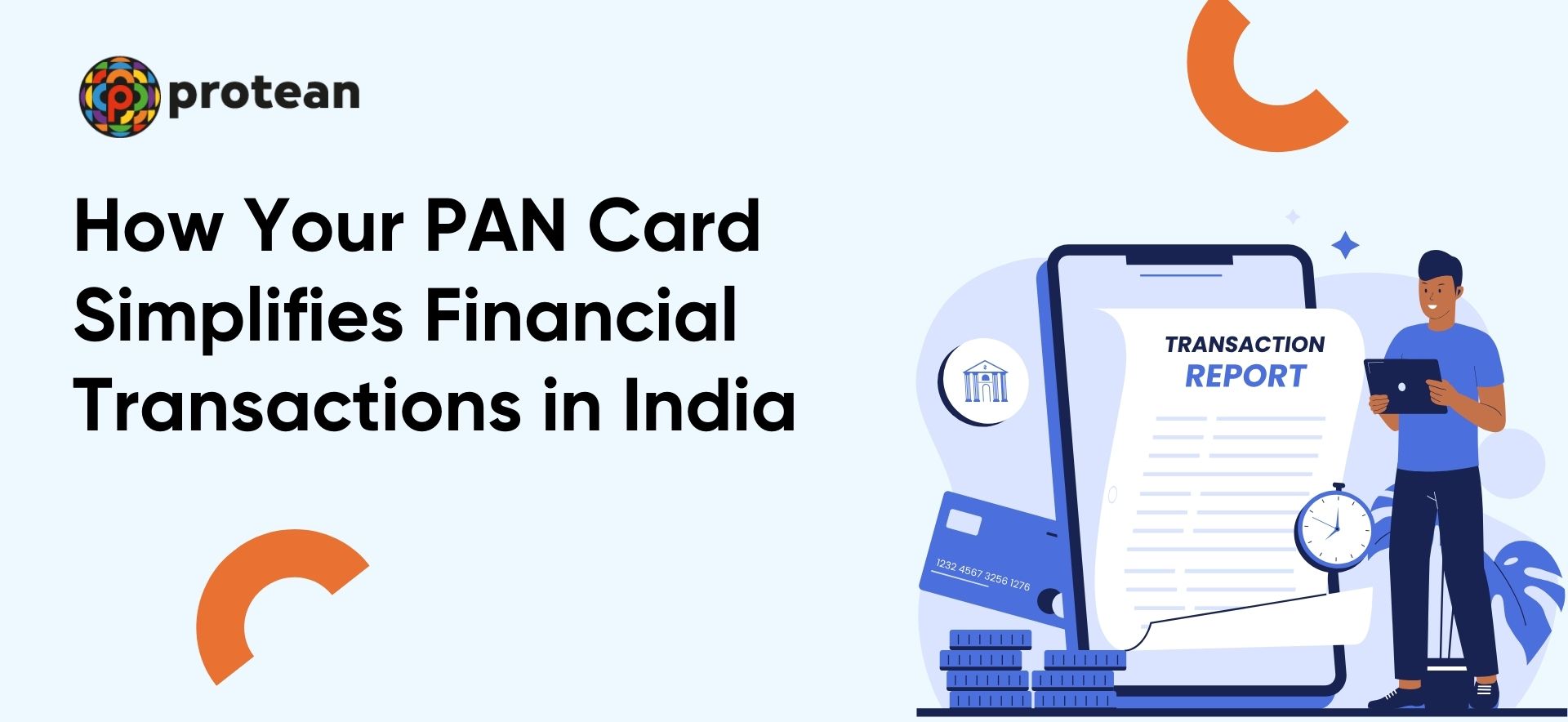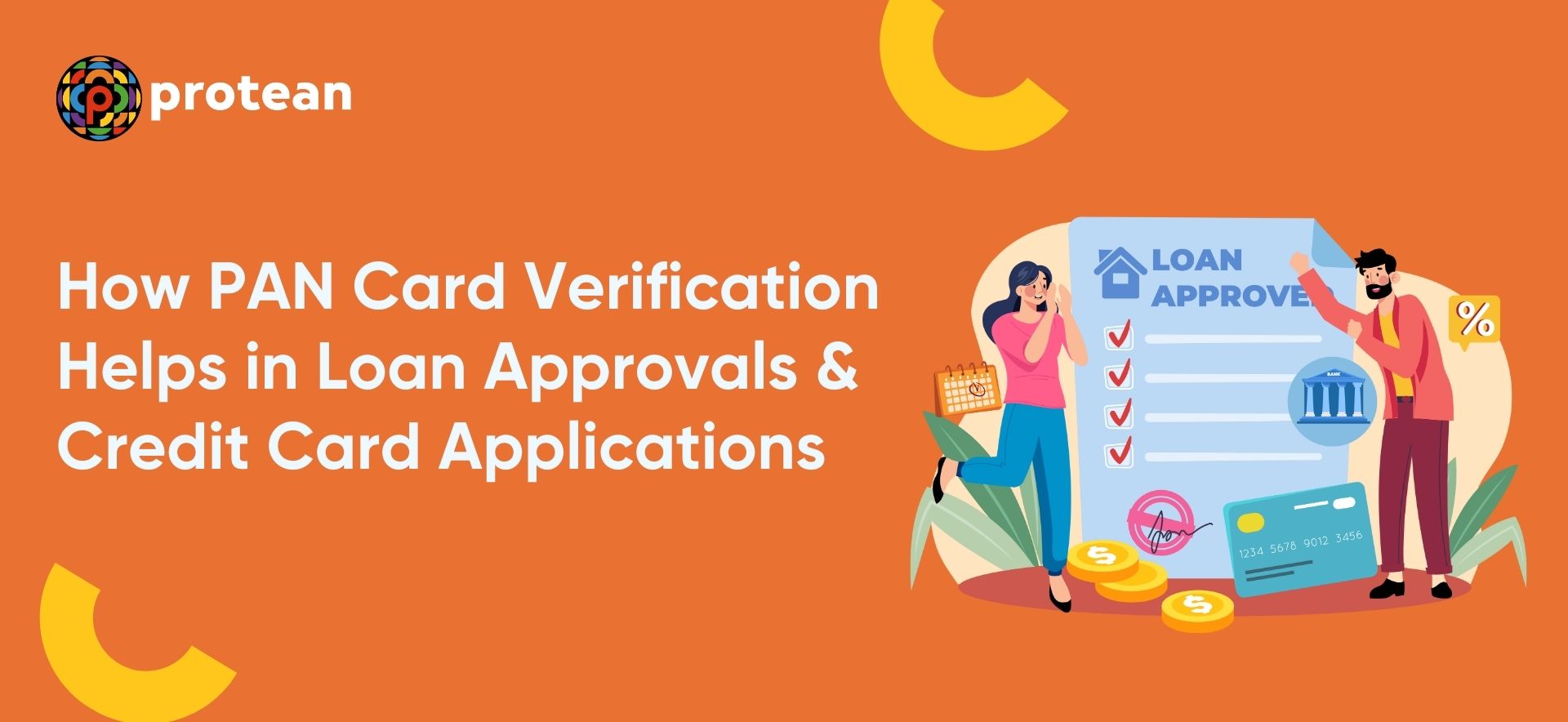Blogs
What Happens If You Don’t Have a PAN Card for High-Value Transactions in India?
Are you about to make a high-value transaction without a PAN card? Wait! Read through to avoid this mistake.
The PAN card, a 10-digit alphanumeric identifier, is issued by the Income Tax Department (ITD). Here are a few notable PAN card features:
- It does the task of linking all your main financial transactions as individuals or entities.
- Initially, it was used for filing taxes. Now, its role has expanded to ensure financial transparency and curb tax evasion.
- The government has now mandated quoting PAN for high-value transactions such as large cash deposits, property purchases, and investments.
- With increased focus on compliance, including Aadhaar linkage and expanded reporting norms, failure to hold or use a valid PAN can lead to penalties, higher tax deductions, and restricted access to financial services.
So, we can understand from the above points that the PAN card new rules have emphasised on the requirement of PAN card for high-value transactions. Let us learn more about this specific requirement of PAN card in detail.
What Qualifies as a High-Value Transaction?
So, what are high-value transactions that require a PAN card?
- High-value transactions can refer to financial activities that exceed prescribed monetary thresholds and are monitored closely by the Income Tax Department.
- These transactions can serve as red flags for unreported income or tax evasion and are required to be reported by banks, financial institutions, and other regulatory bodies under the Annual Information Statement (AIS) and Statement of Financial Transactions (SFT).
Examples of such transactions include the following:

- In these cases, reporting entities such as banks, post offices, property registrars, and mutual fund houses are obligated to inform the tax department, often cross-checking with PAN details to trace ownership and legitimacy.
| Also Read: NRI PAN Card Guide for Financial Transactions in India |
When is PAN Card a Mandatory Requirement
The PAN card is a legal requirement under Section 139A of the Income Tax Act, 1961 and must be quoted for all specified high-value financial transactions. This mandate applies not just during the execution of transactions but also during account opening processes. For instance, individuals cannot open a bank account (excluding basic savings accounts) or make deposits above ₹50,000 without a PAN. Similarly, buying or selling immovable property, making large investments, or purchasing foreign currency beyond specific thresholds also require PAN disclosure.
The government's core objective behind mandating PAN is to strengthen the tax reporting infrastructure, detect tax evasion, and ensure that individuals making substantial financial movements are brought within the tax net. The move also aligns with India’s digital financial surveillance strategy and its long-term push toward a transparent, tax-compliant economy.
Legal Penalties for Not Having a PAN Card During High-Value Transactions in India
Engaging in high-value transactions without a valid PAN or quoting an inoperative PAN can trigger significant legal and financial consequences. These are enforced through specific provisions in the Income Tax Act.
Penalty Under Section 272B
As per Section 272B of the Income Tax Act, a person who fails to comply with the requirement of quoting PAN or quotes an incorrect PAN in prescribed transactions is liable to a penalty of ₹10,000 for each such default. For example, failing to quote PAN while buying property above ₹30 lakh or depositing cash above ₹10 lakh in a year can lead to repeated penalties.
This provision applies not just to individuals but also to institutions and businesses that either fail to collect or incorrectly report PAN details while conducting high-value transactions.
| Also Read: Uses of PAN Card: Essential Guide for Financial Transactions |
Inoperative PAN Due to Non-Linking with Aadhaar
As per the latest government directive (CBDT notification dated April 2025), PANs not linked with Aadhaar by 31st December 2025 will be rendered inoperative. Following could be the implication of an inoperative PAN:
- Treated as non-existent for legal and financial purposes.
- Transactions may be rejected or delayed.
- Continuing to use such PANs may attract penalties under Section 272B.
- Access to financial services may be restricted.
Higher TDS Deduction
As per Section 206AA of the Income Tax Act, if PAN is not furnished where required, tax is deducted at a higher rate, typically 20% instead of the standard 10% or lower. This is particularly relevant in cases involving salary, professional fees, interest income, rent, and dividends. It serves as a corrective measure to ensure tax compliance.
Operational Consequences of Not Having PAN
Beyond legal penalties, the absence of a PAN card during high-value financial transactions can lead to:
- Banking Restrictions: Most banks mandate a PAN to open regular savings or current accounts. Without it, individuals are limited to basic accounts with restricted features and lower transaction limits.
- Investment Limitations: Mutual funds, stockbrokers, and insurance companies require PAN for onboarding. Individuals without a PAN are barred from investing in mutual funds or opening a demat account restricting their wealth-building capabilities.
- Loan Denial: Banks and NBFCs require PAN for processing loan applications.
- Extra Compliance: For certain transactions above ₹2 lakh, such as purchasing jewellery or consumer goods, the government mandates PAN disclosure. In its absence, individuals must submit Form 60, declaring the nature and source of the transaction.
These restrictions collectively make financial inclusion difficult and limit access to mainstream financial products for those who do not possess or use their PAN card effectively.
| Also Read: How PAN Card Verification Helps in Loan Approvals & Credit Card Applications |
How the Income Tax Department Tracks High-Value Transactions
The Income Tax Department now uses AIS and SFT to monitor high-value transactions. They gather data from banks, mutual funds, insurers, stockbrokers, and property registrars for transactions above specified limits.
High Value Transactions are mapped against the PAN of an individual and if an individual has not declared them in his/her Income Tax Return (ITR), a mismatch arises, triggering notices or automated compliance alerts.
Furthermore, integration of PAN with Aadhaar and systems like GSTN, TIN, and CKYC enables cross-platform tracking of financial activities. Individuals without PANs making frequent high-value transactions may face investigation.
Conclusion
In today’s financial and regulatory environment, not having a PAN card is a serious drawback. From higher TDS deductions and monetary penalties to blocked access to essential banking, loan, and investment services, the repercussions are extensive.
As the government intensifies its focus on financial transparency and digital governance, individuals are strongly advised to apply for a PAN card, link it with Aadhaar, and ensure it is actively used and quoted in all high-value transactions. Doing so not only ensures a smooth financial experience but also protects one from legal and fiscal consequences down the line.






